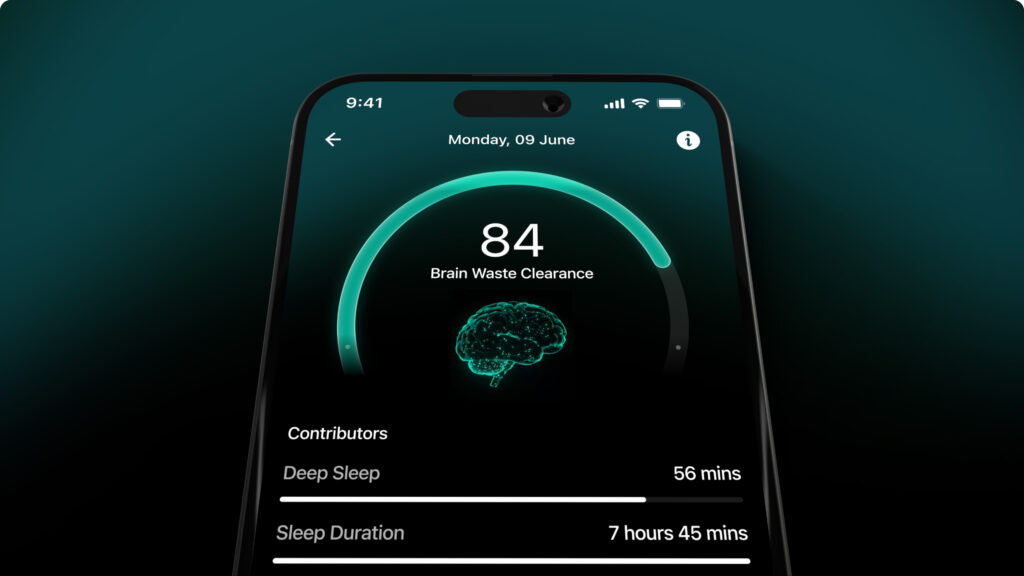When musician Julianna Raye came to Los Angeles to pursue a career in music, she didn’t know her life would take the turn that it did. Even though opportunities presented themselves at her doorstep, she found herself struggling and unhappy on the inside. This feeling of unfulfillment is what led her down the path of becoming a wellness trainer.
She was drawn to mindfulness in the face of crippling anxiety. After attending over 100 silent retreats and clocking in over 10,000 hours in a formal meditation practice, Ray asserts that she managed to rewire her brain. A UCLA examination confirmed that Julianna’s MRI scans in fact revealed these changes in her brain.
As a musician, Raye knows better than most about the intricate relationship between music and mood. Music is a natural equanimity inducer, and equanimity—a state of calmness and composure, especially in a tough situation—is one of three key skills, according to Raye, that one can develop and enhance for “unified mindfulness” and overall well-being.
Music and unified mindfulness
But what is it about music that helps achieve equanimity? Acting as an external stimulus, music elevates the openness and receptivity we already possess, to different emotional states, enabling us to feel more fully. But more importantly, on occasions when we are emotionally overwhelmed or triggered, music can train us to reach a state of calm and composure.
The concept of unified mindfulness, which comprises equanimity, sensory clarity and concentration, can also be used as an aid to combat mental disorders. Raye says that while it’s not a fix, it assists with the well-being process. But can music help with mental health disorders? Raye believes that music can lead to a transcendent experience, and our love of music can be used to transform our wiring to have a radically different and elevated inner experience. Music has the potential to induce equanimity to an extent where transcendence, and excavating our inner extraordinary capacity, becomes a regular experience. What’s important is to understand that this capacity can be developed and accessed without being reliant on music. You don’t have to leave it behind when you leave the music behind.
Sensory clarity and concentration
Developing sensory clarity is the next significant step towards mindfulness. It is best illustrated through our ability to distinguish subtleties in our everyday experiences that we might ordinarily overlook, like catching a bird call amidst a cacophonous din. The third component, concentration, allows our extraordinary experiences to exist without the need to fight for them. Our ability to concentrate can strengthen our ability to focus on the things we love, and also supports our skills of sensory clarity and equanimity. We can use it to develop these skills and increase them in a way that they’re available to us out in the world when we’re dealing with traffic sounds or jackhammers, upsetting news or whatever else it might be that confronts us on a daily basis.
The Science of Music
Music evokes emotional responses tailored to the listener. We can choose what type of music we want to listen to and learn to become familiar with how our inner system—what we see and hear in our minds, and what we feel emotionally—is activated by the music we listen to. The music acts as a positive trigger. When we’re out in the world and confronted with a sound that’s unpleasant, we’re better able to process our emotional response to that because we’ve developed equanimity.
So what’s happening at the moment when we hear this external trigger? When we understand mindfulness practice, then we can deconstruct a moment like that and recognize that when we heard the music, it triggered a memory in our minds in a specific way—it triggered a specific emotional response. Our experience, however, can either have a positive valence, or a negative one. The interesting thing is that as long as we’re developing the skill of equanimity, we’ll see stress levels reduce. We don’t necessarily need to feel good inside to lower our stress.
According to psychologist Mihaly Csikszentmihalyi ‘a flow state’ is a state in which people are so engaged in an activity that nothing else seems to matter and the activity turns into a self-rewarding pursuit. Music is correlated with this flow state. Transient hypofrontality reflects this state. It refers to a brief deactivation of the parts of the brain that evoke anxiety and self-doubt and the activity is gratifying on its own. Research links mind-wandering with unhappiness and negative emotions and studies suggest that mindfulness can suppress the default mode that activates this anxious mind drifting. This lends credence to the neural mechanisms triggered by mindfulness and the flow state that music facilitates.
Raye asks—how can performance athletes use equanimity to their advantage? For them, every split second counts, and if there is a micro tension that they can release through equanimity, then they’ve got an edge. As a result, if someone is physiologically attuned to detecting subtle little places where they can relax or lean in a little bit more, that can spell the difference between a win and a loss.
When all is said and done, Raye wants to coach people in mindfulness. She runs programmes where people can be coached in this subtle process that most people think of as something that can only be accomplished in silence. What they don’t realize is that when we’re able to talk about it, we can actually improve the outcomes from the exercise, and increase our gains. All Ray hopes is that you too can embark on a journey towards a strong, successful sense of unified mindfulness.
Conclusion
Music elevates the receptivity we possess to different emotional states, allowing us to feel our emotions fully. Unified Mindfulness refers to a set of 3 attention skills, concentration power, sensory clarity and equanimity, working in tandem. Music can help us tune into our inner life and induce the skill of equanimity – a state of equilibrium even in a difficult situation. It correlates with a flow state, grounding you in the present moment. When we are emotionally overwhelmed, music can train us to reach a state of calm and composure. In this state, transient hypofrontality takes over and suppresses the parts of the brain that generate anxious feelings. Music coupled with unified mindfulness can have profound effects on our mood and blood sugar over time.
Disclaimer: The contents of this article are for general information and educational purposes only. It neither provides any medical advice nor intends to substitute professional medical opinion on the treatment, diagnosis, prevention or alleviation of any disease, disorder or disability. Always consult with your doctor or qualified healthcare professional about your health condition and/or concerns and before undertaking a new health care regimen including making any dietary or lifestyle changes.
References








